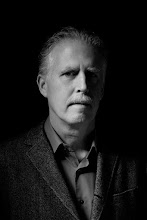In the realm of modern fiction, irony is king.
The king must die.
It’s hard to refute that for the last 100 years irony has ruled the world of fiction. From Lolita to Rabbit, Run to White Noise, our 20th century fictional worlds have been populated by the deviant, the dysfunctional, and the lost.
Before you accuse me of being a starry-eyed romantic, take a
look at literary history as described by Canadian critic Northrup Frye
in his Anatomy of Criticism: Four Essays.
Frye argues that literature has gone through five distinct phases since the
dawn of time, and that each phase is defined by the social gap between the main
characters and readers:
- Storytelling begins in mythic mode, where the main characters are gods and demi-gods – as far above the average man or woman as you can get.
- Next comes romantic mode, with demigods, like Hercules, or mortals with godlike powers, like Achilles. In this category Frye also includes supernatural creatures like fairies and monsters.
- Early modern fiction moves into high mimetic mode, where the protagonists are kings and queens (Shakespeare) and aristocrats.
- In the 19th Century, we encounter low mimetic mode, in which the common man becomes the central character, like private Henry Fleming in The Red Badgeof Courage or Hester Prynne in TheScarlet Letter.
- By the 20th Century, we’ve arrived at ironic mode; here the protagonists occupy a lower social rung than most readers. The modern cast of characters is rife with flawed and fallen people, among them drunks, addicts, prostitutes, chronic liars, young men and women who refuse to grow up, and at the low end, mercenaries, Mafiosi, and sociopaths. In ironic mode, the author invites us to look down on his fallen characters and shake our heads at the contrast between what their lives should be and what they really are.
So what’s wrong ironic mode?
Nothing.
In its defense, perhaps we have as much to learn from
society’s misfits as its paragons, and just possibly, most of us have more in
common with the former than the latter.
And like the other modes, irony can lay claim its own wing
in the literary pantheon, boasting no small number of classics: Don Quixote,
Huckleberry Finn, The Catcher in the Rye, Slaughterhouse Five, and many
others.
Irony, after all, is immortal. It couldn’t be killed if I
wanted it dead – and I don’t. I only want to end its tyranny. And tyranny is the right word. When we’ve come to the point where authors can
no longer argue a vision of the world without sounding laughable,
then irony no longer serves as a check on our vanity, but falsely makes us feel
superior at the same time it hampers us from improving our lives.
Stories should offer us more. Art has to explore
the dark side of life, that can’t be denied, but when irony monopolizes the
world of art, it suggests there’s really no point in trying to solve our
problems – because the human condition, after all, can’t be fixed.
That’s why irony needs to abdicate the throne of modern
storytelling. It's no longer helping us forward, but holding us back. What we need is not more of the cynicism of the 20th century, but a revival of the other positive modes. In other words, authors
need to risk putting their faith in something, whether ironists find it naïve or
not, and populate their stores with characters that readers can like, admire,
and, finally, imitate.

